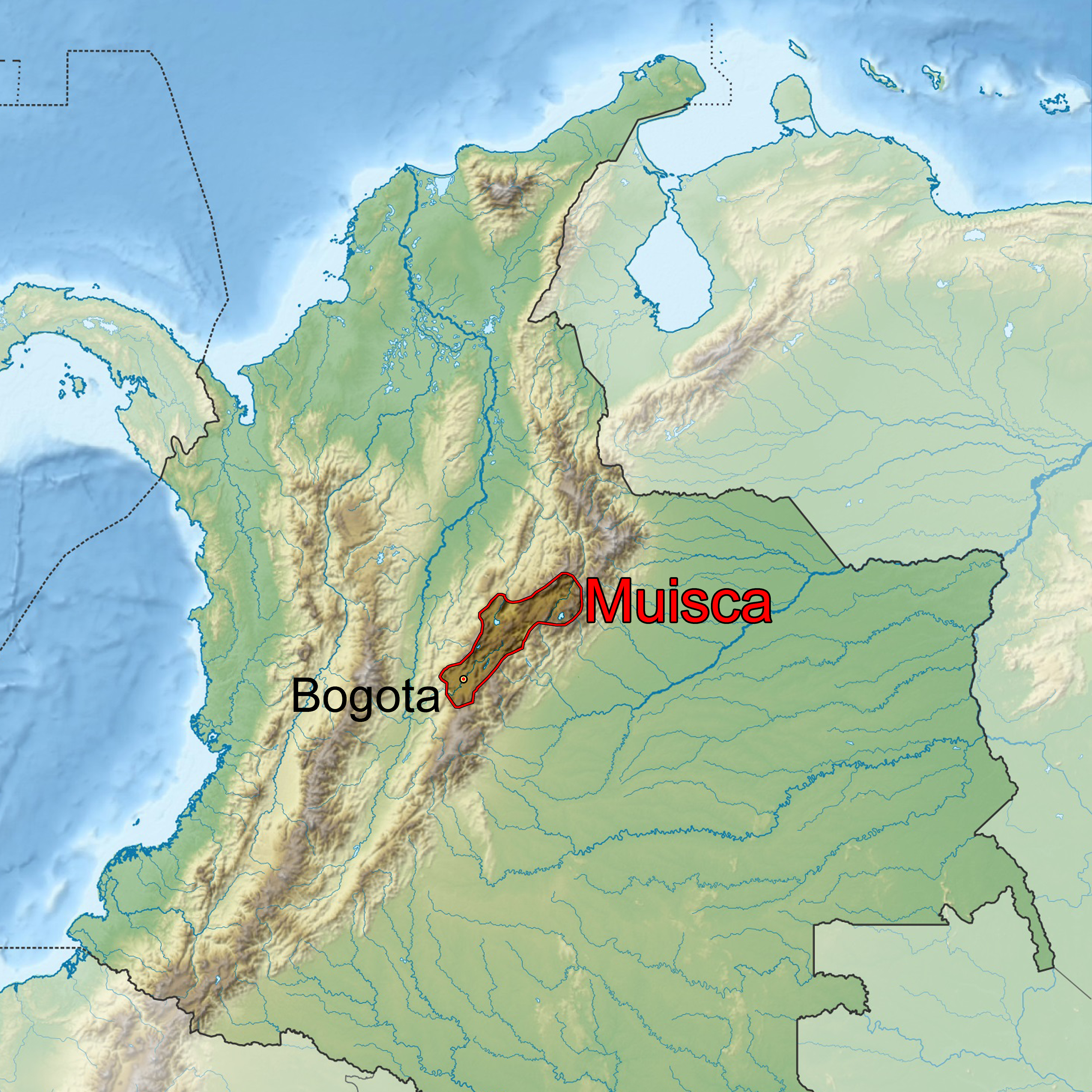|
Ubaté
Ubaté (originally Villa San Diego de Ubaté) is a town and municipality in the Ubaté Province, part of Cundinamarca Department, Colombia. Ubaté is the capital of the province with the same name and situated in the Ubaté–Chiquinquirá Valley of the Altiplano Cundiboyacense. The urban centre is located at an altitude of and from the capital Bogotá. The province borders the department of Boyacá in the north, the Rionegro Province in the west, the Central Savanna Province in the south and in the east and southeast the Almeidas Province. Etymology The name Ubaté comes from the native name "Ebate" meaning "Bloodied land" or "Sower of the mouth". History The area of Ubaté before the Spanish conquest was inhabited by the Muisca, organised in a loose confederation of rulers called the Muisca Confederation. Initially loyal to the ''zaque'' of Hunza, Ubaté changed rule around 1490 when it was submitted by ''zipa'' Saguamanchica.Restrepo Arcila, 2002, p.179 Modern Ubaté ... [...More Info...] [...Related Items...] OR: [Wikipedia] [Google] [Baidu] |
Ubaté Province
Ubaté Province is one of the 15 provinces in the Cundinamarca Department, Colombia Colombia (, ; ), officially the Republic of Colombia, is a country in South America with insular regions in North America—near Nicaragua's Caribbean coast—as well as in the Pacific Ocean. The Colombian mainland is bordered by the Car .... Etymology The name Ubaté comes from the native name "Ebate" meaning "Bloodied land" or "Sower of the mouth". Subdivision The Ubaté Province is subdivided into 10 municipalities:Orden en las provincias de Cundinamarca - El Tiempo References [...More Info...] [...Related Items...] OR: [Wikipedia] [Google] [Baidu] |
Altiplano Cundiboyacense
The Altiplano Cundiboyacense () is a high plateau located in the Eastern Cordillera of the Colombian Andes covering parts of the departments of Cundinamarca and Boyacá. The altiplano corresponds to the ancient territory of the Muisca. The Altiplano Cundiboyacense comprises three distinctive flat regions; the Bogotá savanna, the valleys of Ubaté and Chiquinquirá, and the valleys of Duitama and Sogamoso. The average altitude of the altiplano is about above sea level but ranges from roughly to . Etymology ''Altiplano'' in Spanish means "high plain" or "high plateau", the second part is a combination of the departments Cundinamarca and Boyacá. Geography The limits of the Altiplano are not strictly defined. The high plateau is enclosed by the higher mountains of the Eastern Ranges, with the Sumapaz mountains in the south and Chingaza to the east. The Tenza Valley is located to the east of the Altiplano and the Ocetá Páramo and Chicamocha Canyon are situated ... [...More Info...] [...Related Items...] OR: [Wikipedia] [Google] [Baidu] |
Muisca People
The Muisca (also called Chibcha) are an indigenous peoples of Colombia, indigenous people and Pre-Columbian cultures of Colombia, culture of the Altiplano Cundiboyacense, Colombia, that formed the Muisca Confederation before the Spanish conquest of the Muisca, Spanish conquest. The people spoke Muysccubun, a language of the Chibchan languages, Chibchan language family, also called ''Muysca'' and ''Mosca''. They were encountered by list of conquistadors in Colombia, conquistadors dispatched by the Spanish Empire in 1537 at the time of the Spanish conquest of the Muisca, conquest. Subgroupings of the Muisca were mostly identified by their allegiances to three great rulers: the ''zaque, hoa'', centered in Tunja, Hunza, ruling a territory roughly covering modern southern and northeastern Boyacá Department, Boyacá and southern Santander Department, Santander; the ''zipa, psihipqua'', centered in Bacatá, Muyquytá and encompassing most of modern Cundinamarca Department, Cundinama ... [...More Info...] [...Related Items...] OR: [Wikipedia] [Google] [Baidu] |
Muisca Confederation
The Muisca Confederation was a loose confederation of different Muisca rulers (''zaques'', ''zipas'', ''iraca'', and ''tundama'') in the central Andes, Andean highlands of present-day Colombia before the Spanish conquest of the Americas, Spanish conquest of northern South America. The area, presently called Altiplano Cundiboyacense, comprised the current departments of Colombia, departments of Boyacá Department, Boyacá, Cundinamarca Department, Cundinamarca and minor parts of Santander Department, Santander. According to some List of Muisca scholars, Muisca scholars the Muisca Confederation was one of the best-organized confederations of tribes on the South American continent. Modern anthropologists, such as Jorge Gamboa Mendoza, attribute the present-day knowledge about the confederation and its organization more to a reflection by Spanish chroniclers who predominantly wrote about it a century or more after the Muisca were conquered and proposed the idea of a loose collection o ... [...More Info...] [...Related Items...] OR: [Wikipedia] [Google] [Baidu] |
Spanish Conquest Of The Muisca
The Spanish conquest of the Muisca took place from 1537 to 1540. The Muisca were the inhabitants of the central Andean highlands of Colombia before the arrival of the Spanish conquistadors. They were organised in a loose confederation of different rulers; the '' psihipqua'' of Muyquytá, with his headquarters in Funza, the ''hoa'' of Hunza, the '' iraca'' of the sacred City of the Sun Sugamuxi, the Tundama of Tundama, and several other independent ''caciques''. The most important rulers at the time of the conquest were ''psihipqua'' Tisquesusa, ''hoa'' Eucaneme, ''iraca'' Sugamuxi and Tundama in the northernmost portion of their territories. The Muisca were organised in small communities of circular enclosures (''ca'' in their language Muysccubbun; literally "language of the people"), with a central square where the '' bohĂo'' of the ''cacique'' was located. They were called "Salt People" because of their extraction of salt in various locations throughout their ter ... [...More Info...] [...Related Items...] OR: [Wikipedia] [Google] [Baidu] |
Central Savanna Province
Central Savanna Province ( es, Sabana Centro) is one of the fifteen provinces of Cundinamarca, in the country of Colombia. It is located in the central area of the department, and has 11 municipalities. The province capital is the city of Zipaquirá. Limits * North: UbatĂ© Province * West: Rionegro and Western Savanna Province * South: Bogotá Capital District Bogotá (, also , , ), officially Bogotá, Distrito Capital, abbreviated Bogotá, D.C., and formerly known as Santa Fe de Bogotá (; ) during the Spanish period and between 1991 and 2000, is the capital city of Colombia, and one of the largest ... * East: Guavio Province * Northeast: Almeidas Province Rivers The Central Savanna Province is crossed by the Bogotá River and Rio FrĂo. Demographics The most populous urban centers are ChĂa and Zipaquirá. Subdivision The Central Savanna Province is subdivided into 11 municipalities: [...More Info...] [...Related Items...] OR: [Wikipedia] [Google] [Baidu] |
Saguamanchica
Saguamanchica (died Chocontá, 1490) was the second ruler (''zipa'') of Muyquytá, as of 1470. His ''zaque'' enemy ruling over the northern area of the Muisca territory was Michuá. Alternative spellings of his name are Sacuan Machica, Saguanmachica and Saguanmanchica. Biography As former ''cacique'' of ChĂa, Saguamanchica accessed the throne of the southern Muisca around 1470. His predecessor, the first ''zipa'' of Muyquytá Meicuchuca, left him a rich kingdom with many guecha warriors. This led Saguamanchica to seek expansion of his ''zipazgo''. The first campaign of warfare he planned was to submit the eternal enemies of the Muisca, the Panche and the Sutagao to the west of the Muisca territories. The Carib-speaking peoples formed an alliance against their common and far outnumbered enemy. Saguamanchica together with his vassal Pasca defeated his enemies led by general Uzatama with ease and annexed Fusagasugá and Tibacuy. The expansion policies of the southern M ... [...More Info...] [...Related Items...] OR: [Wikipedia] [Google] [Baidu] |
Almeidas Province
Almeidas Province ( es, Provincia de Almeidas, ) is one of the 15 provinces in the Cundinamarca Department, Colombia. Almeidas borders to the east with the Boyacá Department to the north with the Ubaté Province, to the west with the Central Savanna Province and to the south with the Guavio Province. Subdivision Almeidas is subdivided into 7 municipalities A municipality is usually a single administrative division having corporate status and powers of self-government or jurisdiction as granted by national and regional laws to which it is subordinate. The term ''municipality'' may also mean the ...:Orden en las provincias de Cundinamarca - El Tiempo Refe ...
|
Municipalities Of Colombia
The Municipalities of Colombia are decentralized subdivisions of the Republic of Colombia. Municipalities make up most of the departments of Colombia with 1,122 municipalities ('' municipios''). Each one of them is led by a mayor (''alcalde'') elected by popular vote and represents the maximum executive government official at a municipality level under the mandate of the governor of their department which is a representative of all municipalities in the department; municipalities are grouped to form departments. The municipalities of Colombia are also grouped in an association called the ''FederaciĂłn Colombiana de Municipios'' (Colombian Federation of Municipalities), which functions as a union under the private law and under the constitutional right to free association to defend their common interests. Categories Conforming to the law 1551/12 that modified the sixth article of the law 136/94 Article 7 http://www.alcaldiabogota.gov.co/sisjur/normas/Norma1.jsp?i=48267 the mu ... [...More Info...] [...Related Items...] OR: [Wikipedia] [Google] [Baidu] |
Populated Places Established In 1592
Population typically refers to the number of people in a single area, whether it be a city or town, region, country, continent, or the world. Governments typically quantify the size of the resident population within their jurisdiction using a census, a process of collecting, analysing, compiling, and publishing data regarding a population. Perspectives of various disciplines Social sciences In sociology and population geography, population refers to a group of human beings with some predefined criterion in common, such as location, race, ethnicity, nationality, or religion. Demography is a social science which entails the statistical study of populations. Ecology In ecology, a population is a group of organisms of the same species who inhabit the same particular geographical area and are capable of interbreeding. The area of a sexual population is the area where inter-breeding is possible between any pair within the area and more probable than cross-breeding with in ... [...More Info...] [...Related Items...] OR: [Wikipedia] [Google] [Baidu] |
.png)




